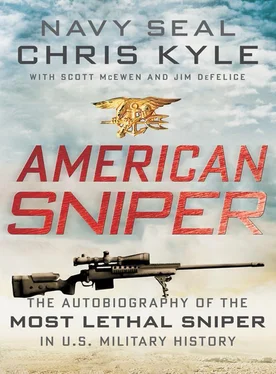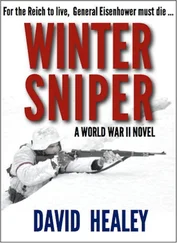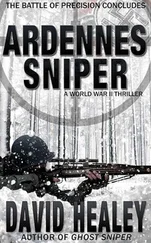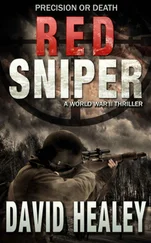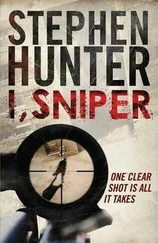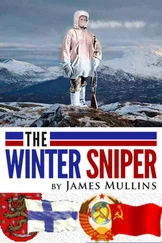There are several ways to take down a ship, depending on the conditions and the target. While we could have used helicopters to get to the North Korean freighter, looking at photos of the ship we noticed that there were a number of wires running above the deck. Those wires would have to be removed before we could land, which would add time to the operation.
Knowing we’d lose the element of surprise if we went in with helos, we opted to use RHIBs instead. We started doing practice runs off the side of the Nassau with boats that had been brought out there by a Special Boat Unit. (Special Boat Units are the SEALs’ dedicated taxi service. They run the RHIBs, Mk-Vs, and other SEAL-related vessels. Among other things, the units are equipped and trained to make combat insertions, braving fire to get SEALs in and out of trouble.)
The freighter, meanwhile, continued sailing toward us. We geared up as it came within range, preparing to hit it. But before we could board the boats, we got a call telling us to stand by—the Spaniards had moved in.
What?
The Spanish frigate Navarra had confronted the North Korean ship, which had been fooling exactly nobody by sailing without a flag and with her name covered up. According to later reports, Spanish spec-op troops went in after the freighter failed to comply with the frigate’s orders to stop. Of course, they used helicopters, and just as we had thought, were delayed by having to shoot out the wires. From what I’ve heard, that delay would have given the captain aboard the vessel time to get rid of incriminating paperwork and other evidence, that’s what I think happened.
Obviously, there was a lot going on behind the scenes that we weren’t aware of.
Whatever.
Our mission was quickly changed from taking down the ship to going aboard and securing it—and uncovering the Scud missiles.
You wouldn’t think missiles would be hard to find. But in this case, they were nowhere to be seen. The ship’s hold was full of bags of cement—eighty-pound bags. There must have been hundreds of thousands.
There was only one place the Scuds could be. We started moving cement. Bag after bag. That was our job for twenty-four hours. No sleep, just move bags of cement. I must have moved thousands myself. It was miserable. I was covered with dust. God knows what my lungs looked like. Finally, we found shipping containers underneath. Out came our torches and saws.
I worked one of the quickie saws. Also known as a cut-off saw, it looks like a chain saw with a circular blade on the front. It cuts through just about anything, including Scud containers.
Fifteen Scud missiles lay under the cement. I’d never seen a Scud up close before, and to be honest, I thought they were kind of cool-looking. We took pictures, then waved the EOD guys—“explosive ordinance disposal,” or bomb disposal experts—in to make sure they were inert.
By that point, the entire platoon was completely covered with cement dust. A few guys went over the side to clean off. Not me. Given my history with dives, I wasn’t taking any chances. That much cement, who the hell knows what happens when it touches the water?
We handed the freighter over to the Marines and went back aboard the Nassau . Command sent word that we would be pulled out and returned to Kuwait in “the same expedient fashion you were brought in . ”
Of course, they were full of shit. We stayed on the Nassau for two weeks. For some reason, the Navy couldn’t figure out how to free up one of the umpteen helicopters they had sitting on the flight deck to get us back to Djibouti. So we played video games and pumped iron, waiting. That and slept.
Unfortunately, the only video game we had with us was Madden Football. I got pretty good at it. Up until that time, I hadn’t been much for playing video games. Now I’m an expert—especially at Madden. That was probably where I got hooked. I think my wife still cusses my two weeks aboard the Nassau to this very day.
Afootnote on the Scuds: the missiles were bound for Yemen. Or at least that’s what Yemen said. There have been rumors that they were part of some sort of a deal with Libya involving a payoff to take Saddam Hussein into exile, but I have no idea whether that’s true or not. In any event, the Scuds were released and went on to Yemen, Saddam stayed in Iraq, and we went back to Kuwait to get ready for war.
That December was the first Christmas I’d ever been away from my family, and it felt a little depressing. The day kind of came and went without a memorable celebration.
I do remember the presents Taya’s folks sent that year, though: remote-control Hummers.
They were small, radio-controlled toys that were just a blast to drive around. Some of the Iraqis working on base had apparently never seen anything like them before. I’d drive a vehicle toward them and they would scream and bolt away. I don’t know if they thought it was some sort of guided missile or what. Their high-pitched screams, coupled with sprints in the opposite direction, had me doubled over. Cheap thrills in Iraq were priceless.
Some of the people we had working for us were not exactly the best of the best, nor were all of them particularly fond of Americans.
They caught one jerking off into our food.
He was quickly escorted from the base. The head shed—our commanding officers—knew that as soon as everyone found out what he’d done, someone would probably try and kill him.
We stayed at two different camps in Kuwait: Ali al-Salem and Doha. Our facilities at both were relatively bare-bones.
Doha was a large U.S. Army base, and played important roles in both the First and what would be the Second Gulf War. We were given a warehouse there and framed-out rooms with the help of some Seabees, the Navy combat engineers. We’d come to rely on the Seabees for similar support in the future.
Ali al-Salem was even more primitive, at least for us. There we got a tent and some shelving units; that was about it. I guess the powers-that-be figured SEALs don’t need much.
Iwas in Kuwait when I saw my first desert sandstorm. The day suddenly became night. Sand swirled everywhere. From the distance, you can see a vast orange-brown cloud moving toward you. Then, suddenly, it’s black and you feel like you’re in the middle of swirling mineshaft, or maybe the rinse cycle in a bizarre washing machine that uses sand instead of water.
I remember being in an airplane hangar, and even though the doors were closed, the amount of dust in the air was unbelievable. The sand was a fine grit that you never wanted to get in your eyes, because it would never come out. We quickly learned to wear goggles to protect them; sunglasses wouldn’t do.
Being a new guy, I was the 60 gunner.
As I’m sure many of you know, “60” refers to the M-60 general-purpose machine gun, a belt-fed weapon that has served the U.S. military in a number of versions for several decades.
The M-60 was developed in the 1950s. It fires 7.62-mm bullets; the design is so flexible that it can be used as the basis for a coaxial machine gun in armored vehicles and helicopters, and a light, man-carried squad-level weapon. It was a workhorse in the Vietnam War, where grunts called it “the Pig” and occasionally cursed over the hot barrel, which required an asbestos glove to change after firing a few hundred rounds—not particularly convenient in combat.
The Navy made substantial improvements to the weapon over the years, and it remains a potent gun. The newest version is so improved, in fact, that it rates a different designation: the Navy calls it an Mk-43 Mod 0. (Some contend it should be considered a completely separate weapon; I’m not going to wade into that debate.) It’s comparatively light—in the area of twenty-three pounds—and has a relatively short barrel. It also has a rail system, which allows scopes and the like to be attached.
Читать дальше
